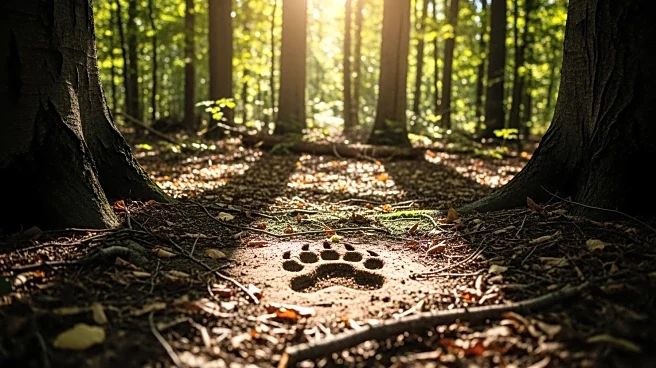What's Happening?
The U.S. embassy in Japan has issued a travel warning for Americans in northern Japan due to a significant increase in bear attacks. The advisory specifically targets areas such as Sapporo, the capital
of Hokkaido, and Akita Prefecture. According to Japan's environment ministry, there have been over 20,000 bear sightings this fiscal year, resulting in 207 injuries and 13 fatalities, marking the highest number of fatal attacks since records began in 2008. Experts attribute the rise in bear encounters to a shortage of dietary staples like acorns and beechnuts, which has driven bears into residential areas. Additionally, depopulation in rural areas has blurred boundaries between residential zones and forests, increasing the risk of bear attacks.
Why It's Important?
The surge in bear attacks poses a significant threat to public safety in northern Japan, affecting both local residents and tourists. The U.S. embassy's warning highlights the urgency of addressing wildlife management and public safety measures. The increase in bear encounters could impact tourism, as travelers may avoid affected areas, leading to economic repercussions for local businesses reliant on tourism. Furthermore, the situation underscores the need for effective wildlife management strategies to prevent further incidents and protect communities from wildlife-related dangers.
What's Next?
In response to the escalating situation, Japanese authorities are intensifying efforts to manage bear populations. This includes hiring hunters and deploying military personnel to support logistical operations aimed at trapping and culling bears. The Ministry of the Environment plans to expand subsidies to employ hunters and conduct bear population surveys. Additionally, local governments are collaborating to strengthen efforts in capturing bears and training hunters. These measures aim to mitigate the risk of further attacks and ensure public safety in affected areas.
Beyond the Headlines
The rise in bear attacks in Japan highlights broader environmental and societal challenges. The shortage of natural food sources for bears points to ecological imbalances that may require long-term solutions, such as habitat restoration and sustainable wildlife management practices. The depopulation of rural areas also reflects demographic shifts that could have lasting impacts on community structures and land use. Addressing these underlying issues is crucial for preventing future wildlife conflicts and ensuring harmonious coexistence between humans and nature.













